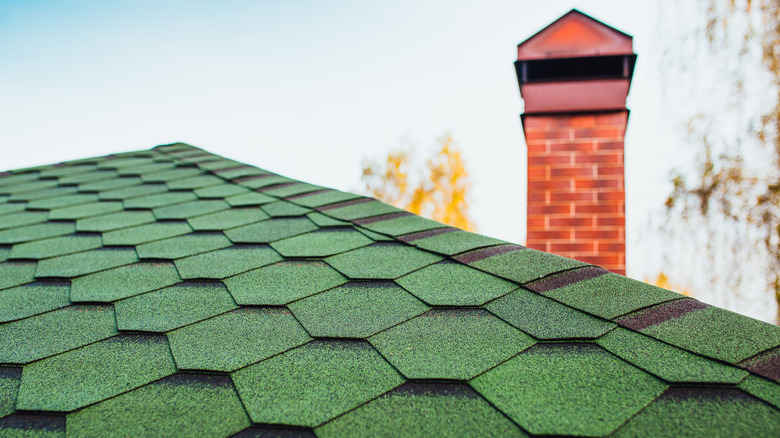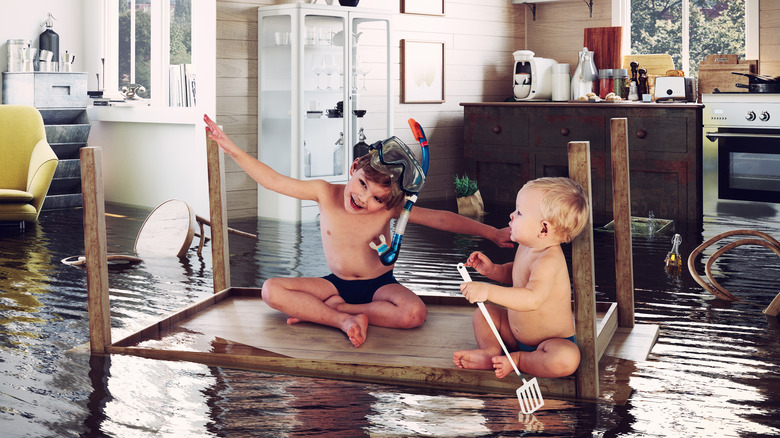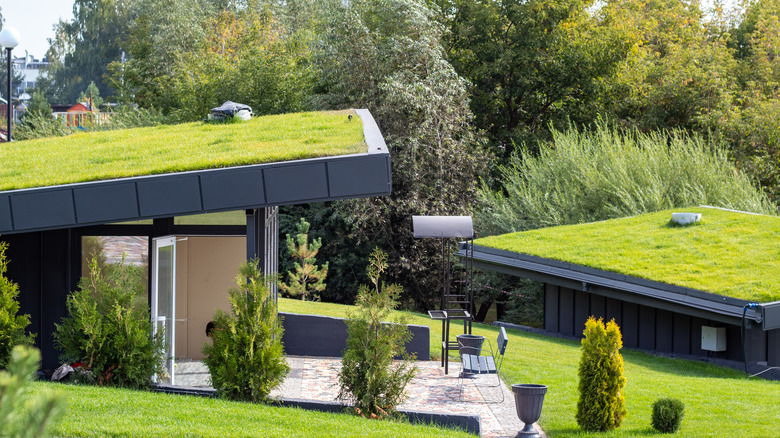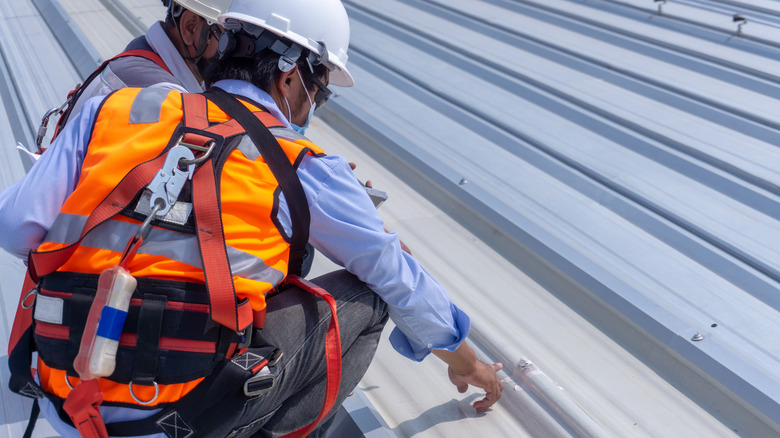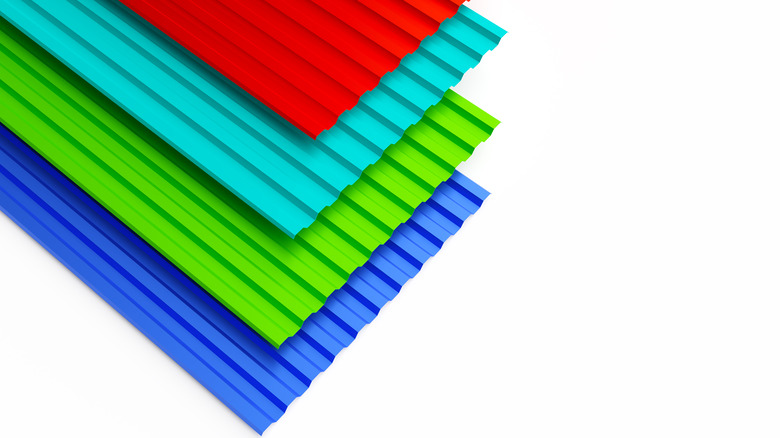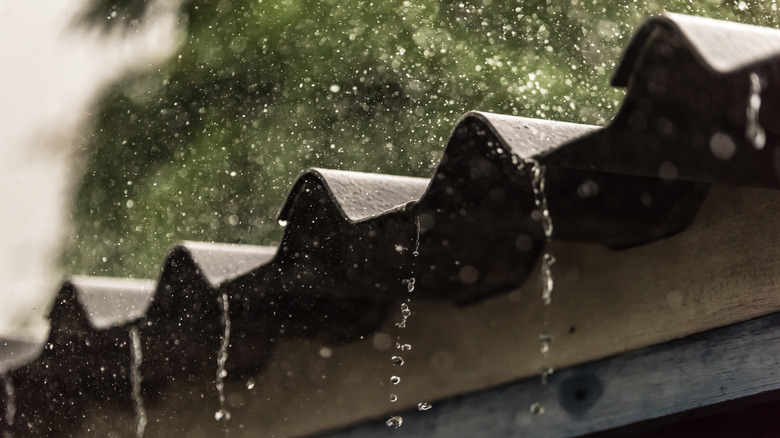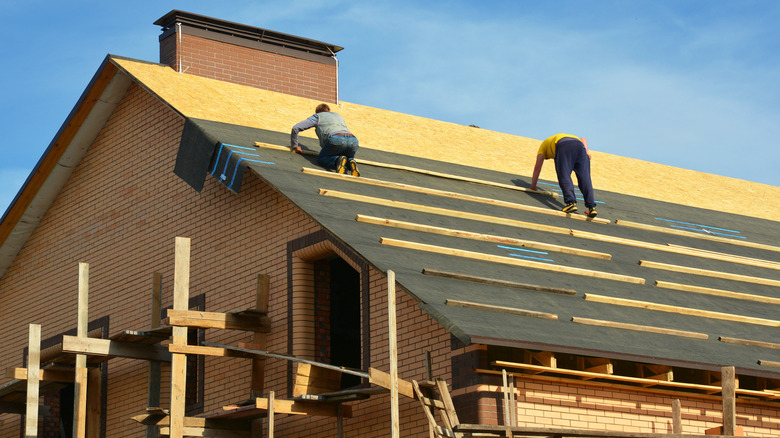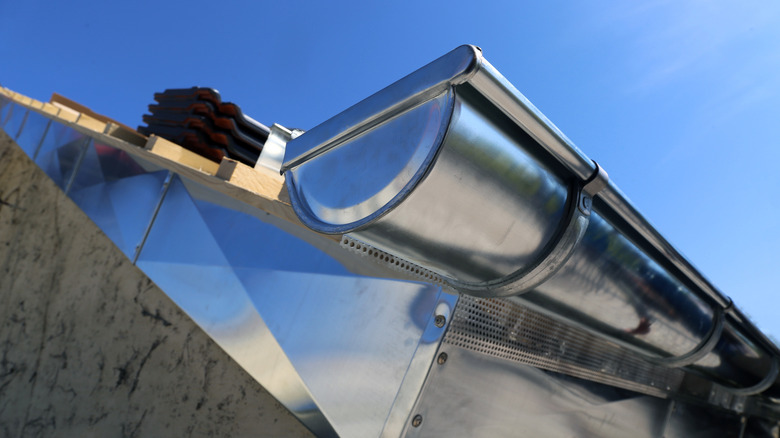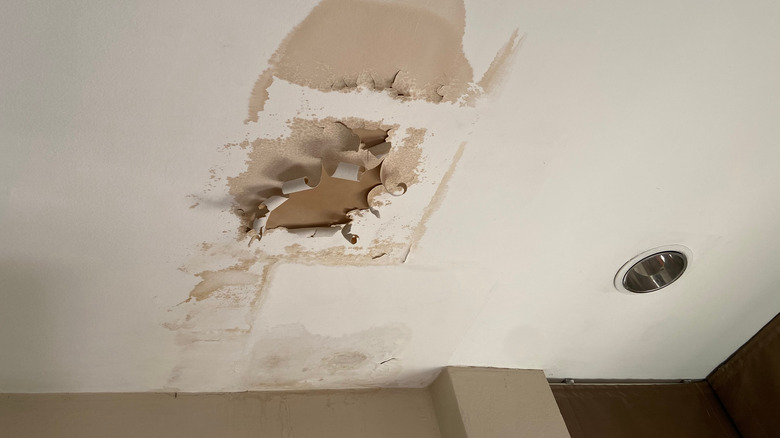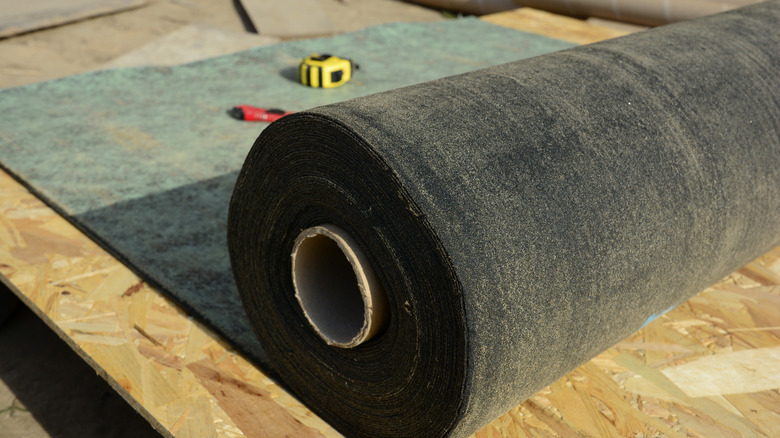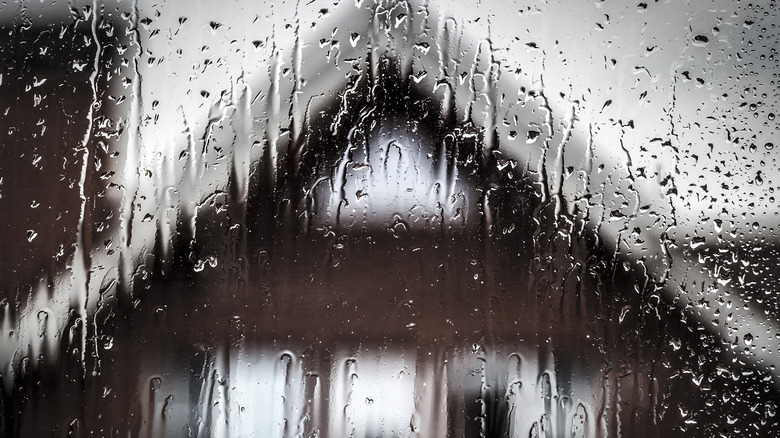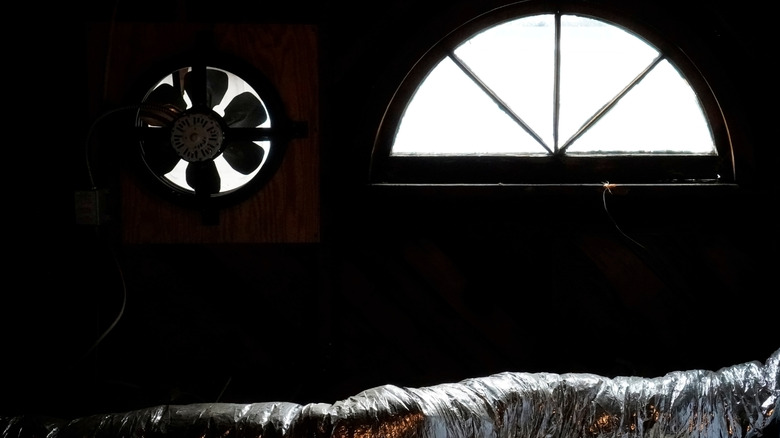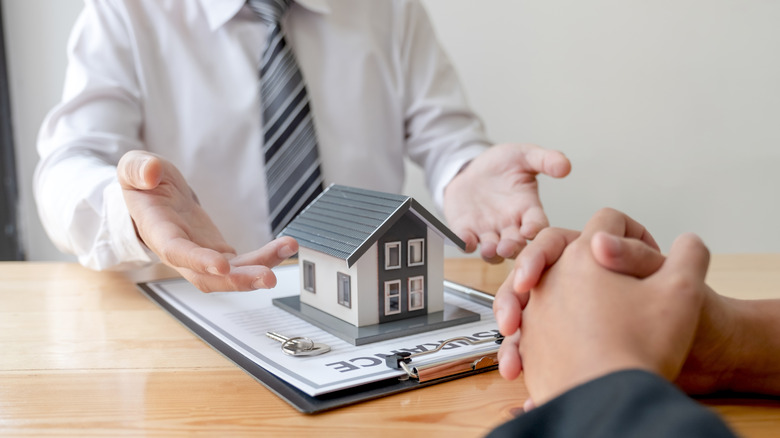Metal Roofs: What To Know Before You Buy
Most people like the benefits, looks, and even the sounds of metal roofs. If you appreciate, say, the aesthetics or energy savings of metal roofing, you might be tempted to jump right into owning one when remodeling or buying a home. But as with most construction matters, complication is the norm, so it pays to thoroughly understand the ins and outs of metal roofs.
Roofs look much the same as they did 50 or 75 years ago, so you might not realize that the roofing industry is evolving rapidly, according to shingle manufacturer IKO Industries. Regulatory standards, competition, and good old-fashioned entrepreneurship make the products better every year. It also makes them harder to choose between, and sometimes more difficult to understand.
But roofs are monumentally important, so when it comes time to build or buy a new home it pays to get a handle on the choices and tradeoffs. The gold at the end of the rainbow is a better roof, a safer home, and a happier you.
You have more than a shingle option
Metal roofing is second only to asphalt shingles as the favorite roofing materials for U.S. homes, and it has been picking up steam for the past decade, as per Remodeling Magazine. Modified bituminous roofing is gaining market share as well, but the material (best known as the built-up covering on flat commercial roofs) is still uncommon in residences (via Allied Market Research). Other, less common alternatives, each with its benefits and problems, include stamped metal panels, tile, shake, and slate roofs. For example, slate performs very well in terms of cost and durability, but can be fragile and is so heavy that it often requires additional construction to support the weight.
In general, vertical seam metal roofing is more durable than most alternatives, requires less repair, and is more expensive than asphalt shingles, but comparable in cost to other choices (via Metal Roofing Alliance). Ultimately it's a somewhat complicated question, influenced by your budget, the style of other homes in your neighborhood, and your willingness or ability to perform maintenance,
It doesn't last forever ... it only seems like forever
Properly cared for, metal roofs can be expected to last 50 years or more ... more than twice as long as asphalt shingles. Of course, they're only durable if installed properly, so there are some signs of poor construction to look out for in an existing home or in your planning for new construction. The most important issue for existing homes is to look for leaks, which are generally caused by improper installation when it comes to standing seam metal panels, as per Sheffield Metals International. Construction details that commonly cause leaks include the failure of fasteners, seams, flashing, and sealant/sealing tape. For example, manufacturers advise that over or under-tightened fasteners can cause leaks. Both problems are easy to spot because of the built-in neoprene washers, which should be properly compressed.
And look out for corrosion, which is the early stage of what will eventually be a leak. Check near fasteners and along edges, on the undersides of panels, where you think there might be scratches, and anywhere dissimilar metals might touch. It varies by manufacturer, but certain combinations of metals result in dramatic corrosion when they come into contact.
The actual construction details that make up proper installation are complicated, and it pays to have a professional inspect the roof system. Consider underlayment, decking, use of manufactuer-recommended accessories, etc. Every aspect of roof installation matters. Some even claim that metal attached to wood furring is problematic because of differing expansion and contraction rates (via Metal Construction News).
The green roof deal
The EPA finds that almost 11.5 million tons of asphalt shingles made their way into landfills in 2015. Metal roofing has a number of attributes that make it a great choice for environmental sensitivity. Its longevity obviously reduces both solid waste and all of the resources used in manufacturing roofing. It is 100% recyclable and cost-effective to recycle or re-use. It's energy-efficient, which reduces your bills and impact on the environment. And these efficiency benefits are long-lasting because qualities such as reflectivity tend to be durable as well, including up to 95% of solar reflectance (via Breaking Energy).
An EPA study even suggests that emerging metal roofing standards (known as "cool roof," "green roof," etc.) can improve climate change by reducing the severity of urban "heat islands." When combined with other technologies like building envelope systems, dynamic insulation systems, low-slope roofs, etc., even more dramatic results can be achieved (via Proceedings of the National Academy of Sciences).
And let's not forget resale value. In some areas, home sellers can recoup as much as 95.5% of their roofing expenses (and 56.1% on average in 2021) just by installing metal (via SFGate). And 90% of buyers would like to buy an Energy Star-rated home, which can be achieved for a roof by using reflective paints or no paint at all.
Costs are through the roof
Improvements in home resale value are good news if you're a metal roofing fan, because metal roofs can cost twice as much as asphalt shingles and are about as expensive as slate, Metal Roofing Alliance reported. But there are cost advantages as well. Modern, reflective metal roofing can save homeowners as much as 25% off their cooling bills. And even average returns on investment in metal roofing outperform the 53.9% return gained by the vaunted kitchen remodel.
So what kind of prices are we talking about here? According to Zonda's 34th annual home building Cost vs. Value report, regional averages for a roofing replacement range from $40,842 in the East South Central region (Alabama, Kentucky, Mississippi, and Tennessee) to $52,795 in the Pacific region (Alaska, California, Oregon, Washington). If these numbers are scary, keep in mind that they don't mean much except in comparison with one another. The job specs are certainly not typical, in that they are for a 3000 sq. ft. hip roof, custom cap treatment, matching accessories, two skylights, premium underlayment, and an ice-barrier membrane (via Remodeling Magazine).
Unfortunately, repairs are not on the house
If you think you're ready to put away your checkbook, not so fast. The cost of owning a metal roof also contains that most unwelcome of surprises, the repair bill. HomeAdvisor reports that repairs to metal roofing cost $1,649 on average. It's enough to make you stop re-enacting movie action scenes on your roof (via No 1. Home Roofing).
The good news is that this compares with $931 for the average asphalt shingle roof repair, which is still enough to make you consider stuffing a sock in the leaking hole (via HomeAdvisor). Costs can be mitigated by diligent maintenance and inspection, though these can be costly as well. But ultimately, the truth is encouraging, and the truth is that metal roofing tends to require minimal repair and maintenance (via Roofing Contractor). Most issues arise where the roof is penetrated — in the flashing around vent pipes, for example (via Bill Ragan Roofing). You can further reduce maintenance by specifying a material like zinc that's practically self-healing, but it also costs about eight times as much as steel roofs.
Design choices are a pigment of your imagination
There is a practically unlimited range of design options available for metal roofs, including many color options, panel styles, and materials, as per metal roofing manufacturer MBCI. Not so long ago, one would have thought that you could have a metal roof in any color you wanted as long as it was hunter green or dull barn red. Today's options are nearly endless. In addition to standard colors pre-finished on metal panels, such as the standard Galvalume offerings, you can have essentially any color customized for your roof (via Roofing Calculator). Pay attention to warranties, because the quality of paint finishes varies dramatically, as does the potential energy savings, so look for Energy Star, CoolRoofs, and similar labels.
It's not always as simple as mere color. Many homeowners choose colors based on their similarity to particular materials, such as copper, aluminum, and titanium. There are even metal roofing paints designed to make your roof look rusty. Of course, you might opt for a different material altogether, though these can be extremely pricey. Metal roofs take any number of forms, from the common standing seam panels to metal tile (via Long Home Products). Installation patterns and optional accents further expand your options.
Noise is no problem if you're a metal fan
According to State Farm, metal roofs can be noisier in certain weather than other roofing materials, as you know if you've ever been under one during a storm with high winds. On the other hand, many people consider the sound of rain on a "tin" roof to be a huge plus. Many Global Home Improvement claims that metal roofs are only slightly louder than asphalt shingles, or not louder at all, or not louder at all if you pay significantly more for perfect installation and stellar insulation options.
So who's right? Well, basically, everyone. AB Martin notes that properly installed metal will only generate slightly more noise in a rainstorm than asphalt shingles (52 dB versus 46 dB). The stories about loud metal almost certainly come from older houses with inadequate roof substructures, as well as possibly from sheds, barns, and other buildings with metal roofs and practically no support structure or insulation.
If you happen to like the sound of rain on a metal roof, as so many do, consider roofing a porch, garage, or other attached space with less complete construction techniques. You'll have the option of hearing the rain, not the inescapable fate of hearing the rain.
Leaping from roof to roof
Once you've decided to add a metal roof to your home or buy a home with a metal roof, it's time to start paying attention to the issues that might prevent the roof from making your home more resilient. World Bank Group explained that "resilient housing" protects us against natural disasters and the vagaries of normal weather effectively using new building methodologies. This includes metal roofing.
So what, specifically, goes into the resilient construction of a resilient metal roof? Here's a rapid-fire rundown. Have the roof professionally inspected, and talk with the inspector in advance about your plans. Your installer should take measurements on-site. Choose your panel style, color, and accessories. Get a bid and question it thoroughly, raising any questions you have, no matter how seemingly trivial. Clean and prepare the property for the work to be done. Make electricity and water readily available (via Sheffield Metals International).
Now that you're ready to go, here's what you should see construction-wise (via Bill Ragan Roofing). Your roof deck will be created, re-created, or repaired to form a stable foundation for the roof. High-quality underlayment is installed and must be 100% free of any wrinkles. Eave trim is installed either over or under the underlayment depending on whether your area is prone to ice damming on roofs (via The Family Handyman). The installer will snap a reference line to keep panels square to the eaves, then install foam closure strips to seal the eave edge of the panels to keep insects and weather out; Z-bars perform the same function at the top of the panels. Panels are installed by screwing them precisely using the correct driver. Clips are usually installed about a foot apart on the panel seams. After the overlapping panels are installed, trim and the ridge cap will be secured in place.
Good construction is top priority
Installation problems are the most common cause of minor and major metal roofing failures, mainly because properly installed metal roofs rarely fail. Such failures can be catastrophic because of the havoc water wreaks inside your walls and rooms. A roof is a system, and every aspect of that system is designed to protect the home and its inhabitants, so every aspect must have your full attention when you're planning to buy.
Check the roof decking. In old construction, it should be solid and rot-free, or should be replaced. For remodels, problem areas in your current roof are the most likely problem areas in the future, so thoroughly investigate the causes of leaks, even if you're replacing the roof. Check reviews and testimonials left for your contractors, and check references if you wish ... but don't let a single bad reference lead you to any conclusions. Not every complainer is correct. And have a plan for gutters that includes installation by professionals, advised Watermaster Roofing. Whether part of the roofing system or not, gutters are key to keeping water out of your home.
After installation, check the flashing above all else (via Rennison Roofing & Exteriors). That's where water is going to find its way in. Ask what sealant was used under panels; it should be specifically designed for metal roofing. Make sure fasteners aren't under- or over-tightened. And, finally, make sure everything looks right. Imperfections and inconsistencies are often a dead giveaway for installation problems.
Water intrusion can cause truss issues
Your roof might look pretty, but it has one main job: keeping out water. Water intrusion can cause a huge range of serious problems, from reduced insulation effectiveness to sickness caused by mold to fire to structural damage. Metal roofs are not prone to leaking, but there are some unique aspects you need to keep an eye on, as per American Home Inspector Training. Corrosion along seams and the edges of panels can lead to water issues, and wind and temperature extremes can cause sealant failure or loose/missing fasteners.
As you inspect your roof and its support structure, keep an eye out for any sign of water where no water should be. Keep in mind that where a drip appears to you is usually not where the leak begins, as water tends to travel along edges to find the path of least resistance. And, of course, it might not appear at all if the leak is dumping water into a wall. Look for loose panels, corrosion, mold, water stains, or peeling paint on walls and ceilings.
And if you're not confident in your abilities, don't hesitate to call a professional for inspection and repairs. Like the roof, they only have one job, and they tend to do it well.
Roof construction isn't over your head
Buying, installing, inspecting, or supervising others doing those things to a metal roof requires you to have the fundamentals of proper roof structure in mind. It starts with the foundation, or the roof deck. According to the Metal Construction Association, roof system decks may be either wood or metal, but are more commonly wood on residential structures. Metal decking appears in several forms: formed steel purlins, bar joists, and solid decking made of corrugated metal sheets. Wood decking takes one of two forms: purlins (long, horizontal support breams) or a solid layer of wood decking, usually plywood, oriented strand board, or wood planking. Solid decking is used for non-structural roofing panels, while the open framing methods are used for heavier-duty structural panels. Solid decking is much quieter and is required for underlayment, so it is the preference of most homeowners (via MBCI).
Underlayment, generally required by code, is a membrane layer that provides additional protection against weather and water intrusion. Some more common underlayment (such as asphalt-impregnated felt) is extremely fragile, so great care must be taken with installation. In areas prone to ice and snow, you will need an underlayment described as a high temp ice and water shield.
You might need a slip sheet between the underlayment and the metal panels in some circumstances. Slip sheets allow the thermal expansion of the roof panels to happen without affecting the underlayment, which is easily torn and damaged.
Sweating the details of condensation
Here's a mystery some metal roof owners face: Imagine you have a water "leak" from your roof, but there hasn't been any rain, and there are no water pipes nearby. What's going on here? Condensation on the underside of metal roofs ("sweating") is an unfortunate aspect of their use. CDMG explains that it is generally caused by high interior humidity in warmer air coming into proximity with a cooler roof or wall surfaces at or under the dew point. When water vapor reaches the dew point and droplets form, you get water beneath the roof you just paid a fortune to keep water out.
High interior humidity has several common causes, such as heating and AC systems (especially oil or gas-fired heaters), human respiration, roof leaks, and construction problems such as moisture entering the building through the ground level of your home. There are solutions, some of which are only feasible during construction and some of which are a good idea at any time.
Dealing with the problem attic
To recap, sweating occurs when moisture condenses on the underside of the metal when its temperature is at or below the dew point. You can deal with the issue by insulating or adding a proper vapor barrier, CDMG reports. These can be extremely expensive options after initial construction. Similarly, moisture moving from the ground into your home structure is relatively easily dealt with during construction, and all but impossible to accomplish later.
Ventilation of the interior spaces or the enclosed attic space beneath the roof is often sufficient to eliminate condensation. Powerful attic ventilation equalizes the temperatures below and above the roof, and removes the moisture that is the root problem (via AVADirect Custom Computers). Many such fans are triggered by temperature and humidity sensors, and can even be activated by dew point sensors that get right to the heart of the problem (via Daniel Müllner). These systems can be relatively inexpensive, and can even be homemade by the industrious DIYer.
Oh hail, insurance will pay for it
As we've seen, metal roofs can be a bit expensive for the average homeowner, so it's natural to turn to your insurance policy with crossed fingers. After all, there's a reason many roofing companies' websites have a "get your homeowner's insurance to pay for it" page: They sometimes will. There are a few catches, however.
According to Investopedia, policies will typically pay for replacement if the existing roof was damaged by an act of nature and not by gradual wear and tear. But keep in mind that most policies are written so that older roofs 20+ years old don't enjoy much coverage. Certainly not enough to replace the roof, and maybe nothing after paying your deductible. Also note that roofing insurance might be paltry or expensive in areas prone to storms that threaten roofs.
Worse than insurance woes are scammers who pop up in the aftermath of a hail storm, tropical storm, or hurricane to take your insurance money (and deposit) and do very little work (via Forbes). Make sure you do your research before accepting anything.

